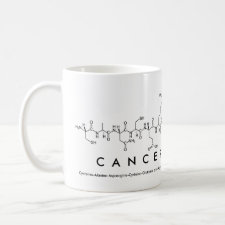
Authors: Liu XX, Wang Y, Wang J, Li L, Li RH
Article Title: Hydrophilic molecularly imprinted dispersive solid-phase extraction coupled with liquid chromatography for determination of azoxystrobin residues in cucumber.
Publication date: 2019
Journal: Iranian Polymer Journal
Volume: 28
Issue: (9)
Page numbers: 725-734.
DOI: 10.1007/s13726-019-00735-1
Abstract: The hydrophilic molecularly imprinted dispersive solid-phase extraction (HMIDSPE) coupled with liquid chromatography (LC) for the separation and the determination of azoxystrobin in cucumber was exploited. Hydrophilic molecularly imprinted microspheres (HMIMs) for azoxystrobin were synthesized through precipitation polymerization that hydroxypropyl methacrylate (HPMA) as functional monomer, ethylene glycol dimethacrylate (EGDMA) as cross-linker, azobisisobutyronitrile (AIBN) as initiator, a mixture solution of butanone (MEK) and n-heptane (V:V 7:3) as solvent. The microspheres were determined by Fourier-transform infrared spectrometry (FTIR) and scanning electron microscopy (SEM). Under the optimum DSPE conditions, the HMIMs could extract and enrich azoxystrobin very efficiently. Comparing HMIMs with C18, the average recoveries of azoxystrobin from blank cucumber samples spiked at 0.1, 0.5, and 1 mg mL-1, ranged between 85.93 and 88.89% with relative standard deviations (RSD), were 2.10-4.91%. The average recoveries of azoxystrobin that used C18 as sorbent were 56.20-60.66% with relative standard deviations (RSD) of 3.22-5.18%. The limit of detection (LOD) and the limit of quantification (LOQ) of azoxystrobin were 3.24 × 10-4 mg kg-1 and 0.005 mg kg-1, respectively. The method of HMIDSPE-LC exhibited highly efficient separation and the enrichment of azoxystrobin. The actual samples were detected free of azoxystrobin
Template and target information: azoxystrobin
Author keywords: Azoxystrobin, Hydrophilic molecularly imprinted microspheres, Dispersive Solid Phase Extraction, liquid chromatography, Cucumber, sorbent



Join the Society for Molecular Imprinting

New items RSS feed
Sign-up for e-mail updates:
Choose between receiving an occasional newsletter or more frequent e-mail alerts.
Click here to go to the sign-up page.
Is your name elemental or peptidic? Enter your name and find out by clicking either of the buttons below!
Other products you may like:
 MIPdatabase
MIPdatabase









